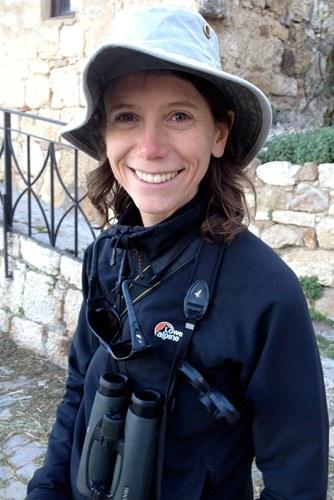
Submitted by Administrator on Fri, 03/03/2017 - 17:00
Many congratulations to Dr Claire Spottiswoode who has been awarded the Linnean Society’s Bicentenary Medal for 2017. This is awarded annually in recognition of excellent work done by a biologist under the age of 40 years. It is the second award she has received this year; she also won the ZSL’s Scientific medal.
Claire holds three positions, two in the Zoology department where she is the Hans Gadow Lecturer and a BBSRC David Phillips Research Fellow and one at the University of Cape Town, where she holds the Pasvolsky Chair of Conservation Biology.
Claire joined the department in 2002 after completing her first degree at the University of Cape Town in South Africa, leaving there with a distinction and class medals. She undertook a PhD with Professor Nick Davies entitled Behavioural Ecology and Tropical Life-Histories in African Birds.
Immediately after completing her PhD she became a Junior Research Fellow at Sidney Sussex College, as well as a Research Associate at the FitzPatrick Institute of African Ornithology. The JRF post was quickly followed by the Royal Society Dorothy Hodgkin Research Fellowship, 2008-13. These research fellowships have allowed Claire to flourish as a field biologist, particularly in the field of evolution, ecology and conservation of species interactions, and mainly on African birds.
She has primarily worked on brood parasitism in particular on Cuckoo Finches and their Prinia hosts. Along with Dr Martin Stevens, she showed that the Prinia hosts have evolved complex patterns, or signatures, on their eggs in order to differentiate their eggs from the parasitic Cuckoo Finch egg. The story does not end though as Claire has discovered that the parasites in turn evolve “forgeries” of host egg signature patterns.
Claire has largely done this via field experiments but has included the use of historical egg collections in Zambia. The two forms of study come together to suggest that the astonishing beauty and diversity of egg signatures is indeed the result of a coevolutionary arms race between signatures and forgeries: hosts try to escape mimicry by evolving new egg types, but are constantly pursued by the parasite.
In 2011 while working on another parasite, the Honeyguide, she and her colleague J Koorevaar, used underground filming, for the first time ever, to discover that the newly hatched, featherless and blind chicks kill their adoptive siblings in a bid for survival. The rather grisly video can be seen on the BBC Nature website.
Her recent work has taken has taken a new turn and she is now working on mutually beneficial interactions between species. She is working in Mozambique’s beautiful Niassa National Reserve, and in collaboration with the Niassa Carnivore Project, she is studying the remarkable mutualism between human honey-hunters and greater honeyguides that lead them to wild bees’ nests. Honey for the humans, wax for the birds! Her recent Science paper had hundreds of commentaries worldwide, including one on the front page of the New York Times.
Claire has built up a thriving research group in the Department but also a fantastic team of local assistants in Zambia and now in Mozambique. They have applied their great local knowledge and skill to find over a thousand nests and have been a crucial part in allowing Claire, her research group and other collaborators to conduct their experiments.
To receive two medals for her work in one year is fantastic and we are very proud to have her in our department.
